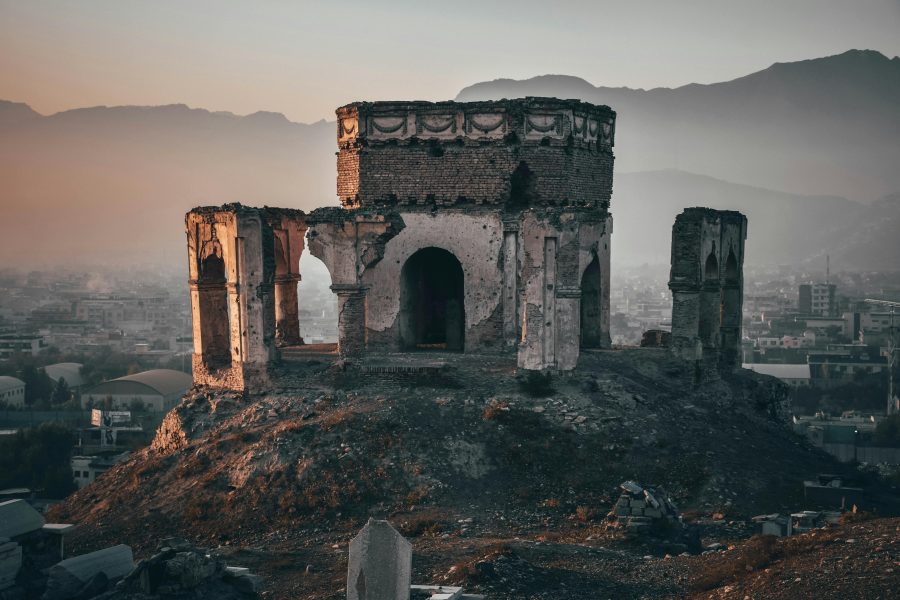Western policy elites still parse Afghanistan as a jigsaw of “not enough troops,” faulty intelligence or premature withdrawal. My earlier essay, “Avoiding the Capability Trap,” argued the causal chain runs the other way: abundant matériel deepens failure when it substitutes for locally grounded legitimacy.¹ Kabul’s implosion confirms that verdict while exposing the structural biases that reproduce Western misadventures. Reading Afghanistan through Barry Buzan’s taxonomy of nation-state linkages, and turning Mohammed Ayoob’s “security problematic” inside-out, suggests that non-intervention can be the hardest-nosed strategic choice.
1 – Afghanistan and the myth of the state-nation shortcut
Buzan sketches four ways coercive “states” and imagined “nations” intersect.² NATO tried to leap from a plural social terrain to a state-nation, manufacturing the nation from the top down. Such feats, Buzan warns, demand decades of standardised schooling, fiscal extraction and symbolic homogeny.³ The 2001 Bonn Agreement allowed barely eighteen months before nationwide elections; NATO’s calendar, not Afghan social realities, set the tempo.
Afghanistan, meanwhile, was no tabula rasa. Pashtun, Tajik, Hazara and Uzbek identities drew authority from kin networks, shrine endowments and cross-border trade; “Afghan” was a diplomatic label, not a lived community.⁴ Warlords converted donor cash into what Antonio Giustozzi calls emporia of mud: polities legitimated by personal loyalty and local revenue, not Kabul’s ministries.⁵ By 2018 those ministries relied on foreign funds for over 75 percent of their budget,⁶ turning the state into a vessel of structural extraversion rather than a nucleus of solidarity.
2 – The capability trap, revisited
Lant Pritchett’s “capability trap” captures the dynamic whereby lavish resources mask institutional hollowness.⁷ In Afghanistan, US airpower and payrolls produced countable outputs (flights logged, teachers hired) while corruption and predation eroded the outputs citizens actually valued. Sarah Chayes shows how elite rackets taxed every aid dollar several times over;⁸ Carter Malkasian records that, when American air support vanished in August 2021, Afghan troops often cut local deals rather than fight for an abstraction they never owned.⁹ External capability therefore both props up a weak state and delegitimises it by advertising dependency. The more Washington spent, the more Kabul looked foreign – boosting the Taliban’s claim to embody a rooted, Islamic nation.
3 – Ayoob’s mirror: why the European template misleads
Ayoob argues that post-colonial polities face the same nation-state forging tasks that once convulsed Europe, only faster and under tighter scrutiny.¹⁰ The Afghan debacle undercuts that analogy. Europe’s pathway was path-dependent, not path-determining: mercantilist war, colonial plunder and the absence of outside tutors bankrolled its state projects. Early-modern rulers could bleed and tax their populations because no hegemon demanded quarterly reports on “good governance.”
Transposed into today’s legally dense, media-saturated arena, the blueprint backfires. Pressure to display Weberian credentials, typified by monopoly over legitimate violence inside fixed borders, creates Potemkin ministries and finances clientelist bargains that replace, rather than integrate, vernacular authority. In trying to “finish Europe’s journey,” donors help reproduce the insecurity they hope to cure.
4 – Post-Westphalian prudence
Buzan’s matrix makes plain that Afghanistan never offered a plausible route to a unitary state-nation; NATO’s insistence on conjuring one exposed Kabul’s dependency instead. Prudence therefore begins with political triage.
- Contain, don’t transform. Keep a light regional footprint, such as over-the-horizon strike tools, intelligence liaison, calibrated sanctions, to blunt trans-national threats without social engineering.¹¹
- Scaffold plural bargains. In 2011 UNAMA quietly brokered a Helmand River water-sharing accord between rival tribes and Iran, reducing clashes at a fraction of ISAF’s stabilisation budget.¹² Such micro-compacts, extended to customs corridors or pasture routes, secure order by meshing with existing authority rather than overruling it.
- Respect political tempo. Replace annual disbursement cycles with decade-long trust funds that release money only after mutually verified benchmarks, insulating local actors from the rent-seeking churn that sustains capability traps.¹³
This is not intended to be capital-letter ‘Isolationism’. Rather it should be seen as an exercise humility: an admission that legitimacy sediments slowly, and that neither drones nor curricula can manufacture a nation from the outside.
Footnotes
- Matthew Toy, “Avoiding the Capability Trap: A Framework,” matthewtoy.com, 20 July 2025. https://matthewtoy.com/strategy/avoiding-the-capability-trap-a-framework/
- Barry Buzan, People, States and Fear: An Agenda for International Security in the Post-Cold War Era, 2nd ed. (Boulder: Lynne Rienner, 1991), 42–54.
- Ibid., 48–50.
- Thomas Barfield, Afghanistan: A Cultural and Political History (Princeton: Princeton University Press, 2010), 271–75.
- Antonio Giustozzi, Empires of Mud: Wars and Warlords in Afghanistan (London: Hurst, 2009), 103–15.
- Special Inspector General for Afghanistan Reconstruction, Why the Afghan Government Collapsed, Report 23-05-IP (Arlington, VA: SIGAR, 2022), 1–3.
- Matt Andrews, Lant Pritchett and Michael Woolcock, “Escaping Capability Traps through Problem-Driven Iterative Adaptation (PDIA),” CID Working Paper 240 (Harvard Kennedy School, June 2012), 2–7.
- Sarah Chayes, Thieves of State: Why Corruption Threatens Global Security (New York: W. W. Norton, 2015), 67–72.
- Carter Malkasian, The American War in Afghanistan: A History (New York: Oxford University Press, 2021), 443–50.
- Mohammed Ayoob, “The Security Problematic of the Third World,” World Politics 43, no. 2 (1991): 257–83.
- Barry R. Posen, Restraint: A New Foundation for U.S. Grand Strategy (Ithaca, NY: Cornell University Press, 2014), 69–100.
- Helene von Bismarck, “Water Sharing in Helmand: UNAMA’s Quiet Diplomacy,” Journal of Peacebuilding 12, no. 1 (2016): 41–55.
- Andrews, Pritchett and Woolcock, “Escaping Capability Traps,” 5.
Photo by Suliman Sallehi: https://www.pexels.com/photo/gray-concrete-building-on-top-of-hill-1484776/



